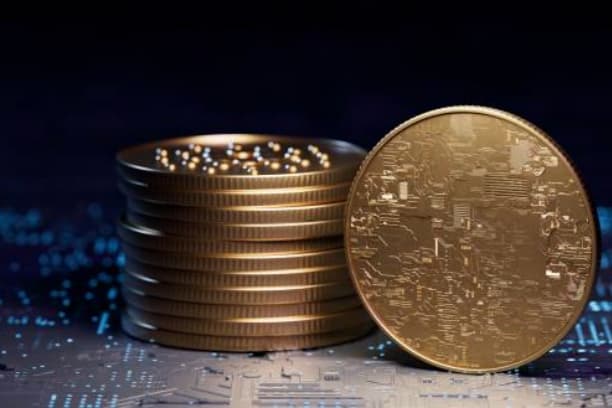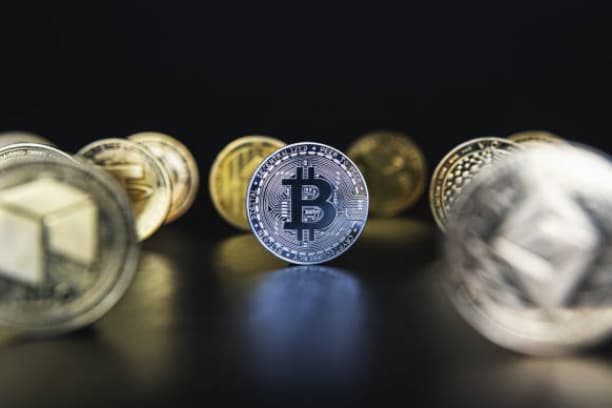Since its launch, the CoinSmart Chain (BSC) has quickly become a major force in the blockchain space. As the core infrastructure in the cryptocurrency world, BSC not only has the advantage of high-speed, low-cost transactions, but has also successfully attracted a large number of decentralized applications (DApp) and developers. Whether you are an investor or a developer, you can find unlimited opportunities in the BSC ecosystem. This post will delve into the core role of the CoinSmart Chain to give you an idea of how it is changing the way the blockchain world works and help you get your foot in the door of this crypto revolution.

What is the Coin Security Smart Chain (BSC)?
The Binance Smart Chain (BSC) is a high-performance, scalable blockchain from Binance designed to provide a low-cost and fast trading environment.The most significant feature of the BSC is that it employs an ethereum-compatible smart contracting system and utilizes a dual-chain architecture that separates the transaction processing from the asset management of the Binance chain. This allows BSC to not only provide a decentralized application (DApp) development environment similar to that of Ether, but also provide significant advantages in transaction speed and handling fees.
Why is the speed and cost of BSC so attractive?
BSC's block time is about 3 seconds per second, which is much faster than Ether's 15 seconds. What's more, BSC's transaction fees are extremely low, which enables users to significantly reduce their costs when making a large number of transactions. Therefore, BSC's low latency and low transaction fees become the main attraction for developers and investors.
Core Functions and Roles of the Coin Smart Chain
BSC is a smart contract blockchain whose core function is to support the development of decentralized application (DApp) and decentralized financial (DeFi) projects. Its architecture allows developers to create and run smart contracts on this platform, providing decentralized financial services, trading platforms, game applications, etc. BSC's high performance and low handling fees make it the platform of choice for many crypto projects.
The rapid growth of decentralized finance (DeFi)
The birth of BSC coincided with the explosion of the DeFi craze. Almost all major decentralized exchanges (DEX) such as PancakeSwap achieved rapid growth by leveraging BSC's high-speed and low-cost advantages. participants in the DeFi protocol can enjoy lower transaction fees and higher liquidity, thus improving the efficiency of the overall platform.
The BSC Advantage: High Performance and Low Costs
In the highly competitive world of blockchain, BSC stands out with its significant advantages: BSC's transaction processing speed is extremely fast, with a block-out time of only 1 second per block. This makes BSC especially good in a transaction-heavy environment. In contrast, Ether's blocks take longer and network congestion can lead to higher transaction fees as transaction volumes increase.

Advantages of low transaction fees
Ether was once a major deterrent for many users due to its high transaction fees. In contrast, BSC's transaction fees are typically a fraction of Ether's, which is especially important for users with small transactions. This advantage makes BSC an ideal choice for small developers and users who want to conduct on-chain operations.
How does BSC support decentralized applications (DApp) and developers?
The BSC provides a very user-friendly environment to support the development of decentralized applications (DApp). As BSC is compatible with Solidity, the smart contract language of Ether, developers can easily migrate existing Ether DApps to BSC, enjoying higher performance and lower transaction costs. In addition, BSC's openness and innovative design have led to the creation of a large number of applications such as DeFi, NFT, and games.
Developer Support and Resources
The BSC community provides developers with a wide range of resources, including developer funds, technical support, and training, etc. BSC's ecosystem has attracted a large number of developers, which has led to a year-on-year increase in the number of decentralized apps (DApps) on the platform and covers a wide range of domains, including finance, games, NFTs, and stablecoins.
How to participate in the Decentralized Finance (DeFi) ecosystem using BSC?
BSC offers users a wide range of DeFi products, from decentralized exchanges (DEX), lending platforms, to liquidity mining, and more, and participants can choose from a variety of ways to grow their revenues.PancakeSwap is the largest DEX platform on BSC, which not only offers fast and low-fee trading services, but also has a variety of incentives to attract liquidity providers and traders.
Liquidity Mining and Pledge Opportunities
On BSC, liquidity mining has become a popular choice for DeFi participants. Users can offer their assets to the liquidity pool and receive a return based on the liquidity they contribute, and BSC also supports various pledge options, allowing users to receive a stable return while keeping their assets safe.
How does the BSC address the scalability issue?
Blockchain scalability has been a bottleneck limiting the development of many blockchains, and BSC has taken an innovative approach to solving this problem.BSC uses Byzantine Fault Tolerance (BFT), which makes it more resilient in handling high-frequency transactions, and BSC's off-chain data processing and distributed computing also increase the overall scalability of the system.
Advantages of Dual Chain Architecture
The dual-chain architecture of BSC and Binance Chain enables the Binance Smart Chain to effectively share the pressure of trading and asset management. This structure not only enhances the scalability of BSC, but also provides more choices for different applications, further promoting the prosperity of the BSC ecosystem.
Frequently Asked Questions Q&A
Q1: Is BSC's trading speed really that fast?
Yes, with a block time of just 1 second, BSC is able to process a large number of transactions per second, which makes BSC extremely efficient in processing transactions.
Q2: Can I transfer my Ether DApp to BSC?
Yes, BSC is compatible with Ether and developers can easily transfer DApps on Ether to BSC and enjoy lower transaction fees and higher efficiency.
Q3: How do I start DeFi trading on BSC?
To start using BSC for DeFi trading, you first need to have a BSC-supported wallet (such as MetaMask), then transfer funds into the BSC network, followed by the option to participate in platforms such as PancakeSwap for trading or liquidity mining.
BSC not only provides an efficient and low-cost blockchain environment for developers and investors, but also provides a broad stage for the development of applications such as DeFi. In this ecosystem full of opportunities, everyone can find their own place and realize the innovation and prosperity of the crypto world.














